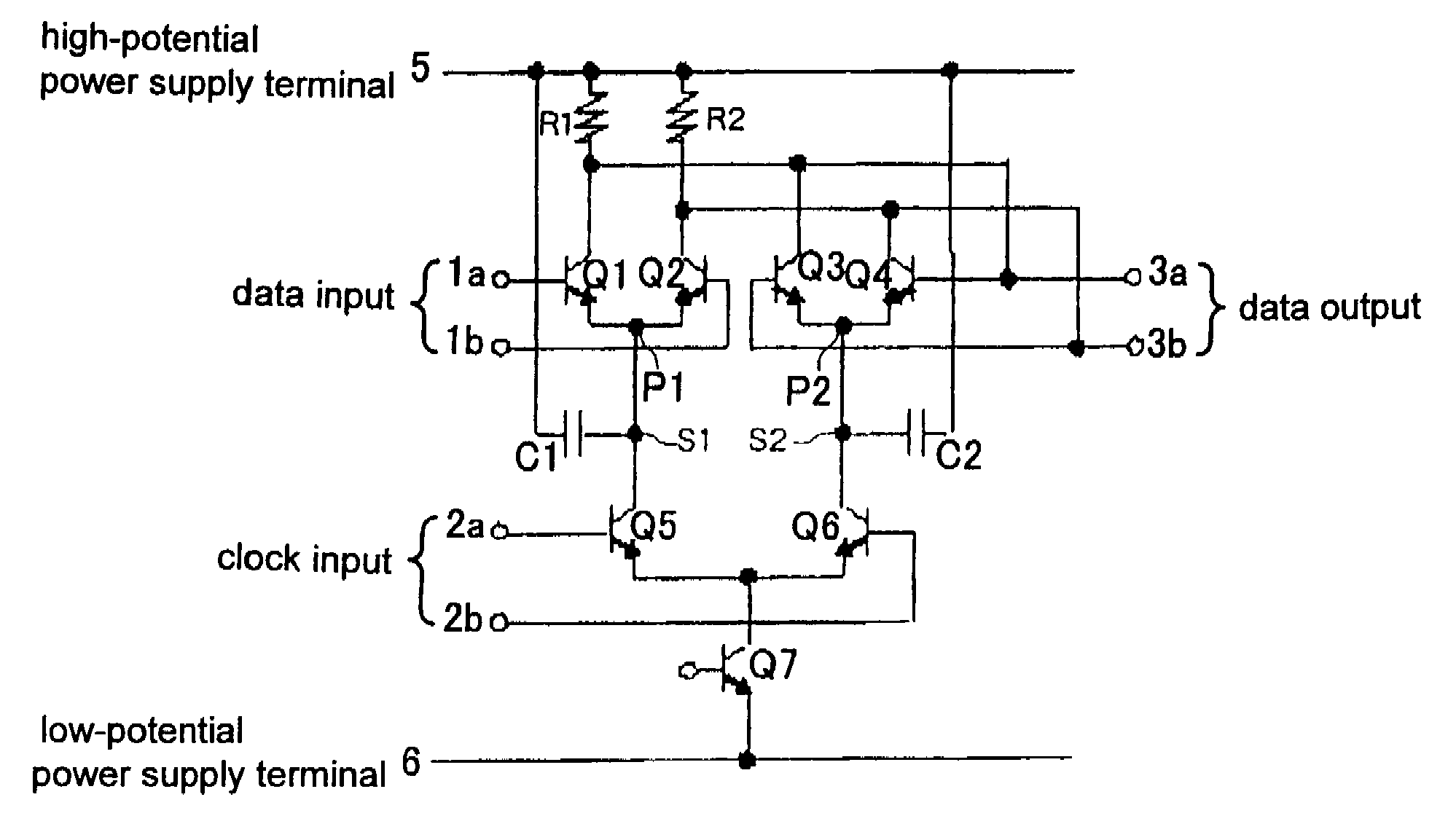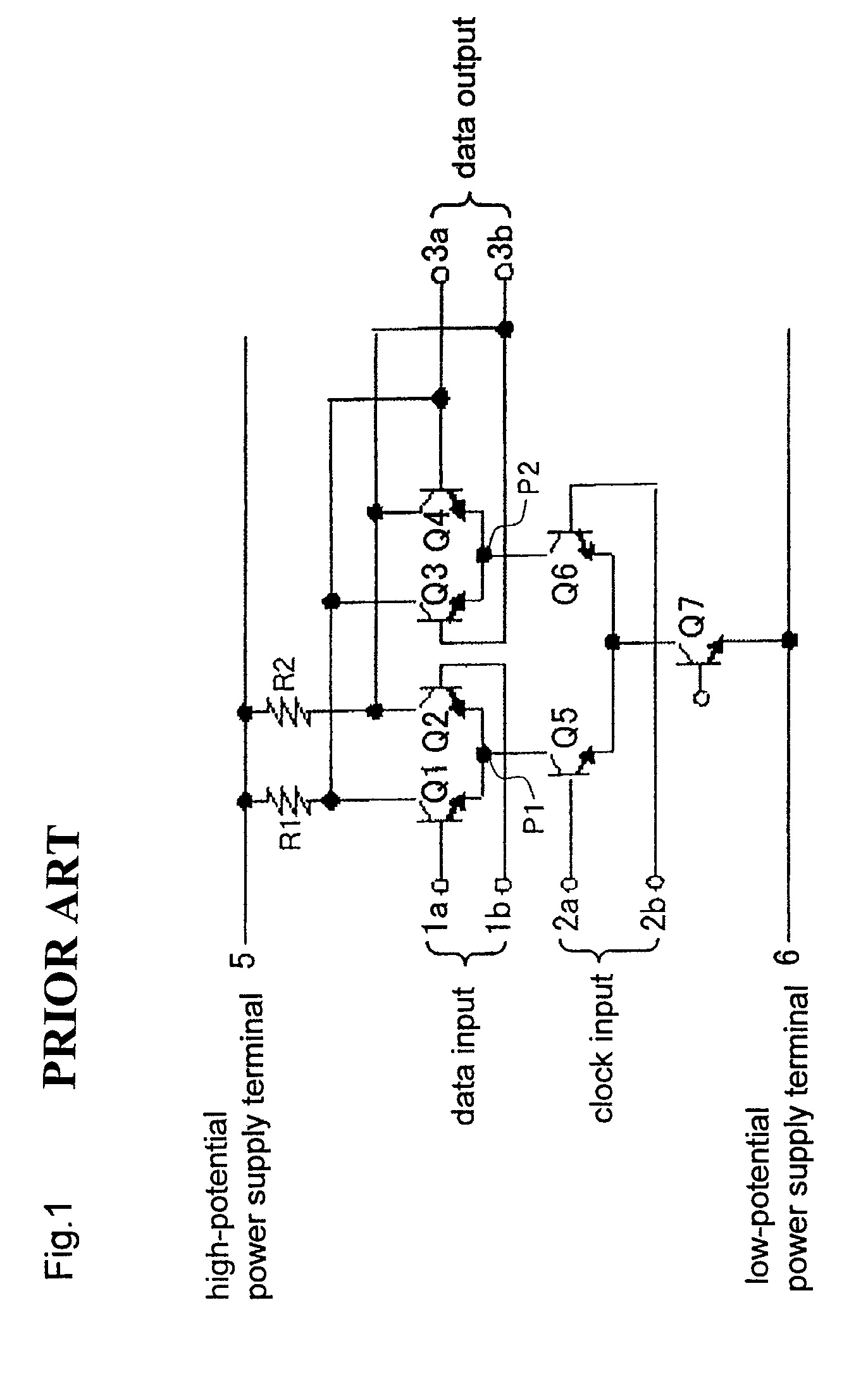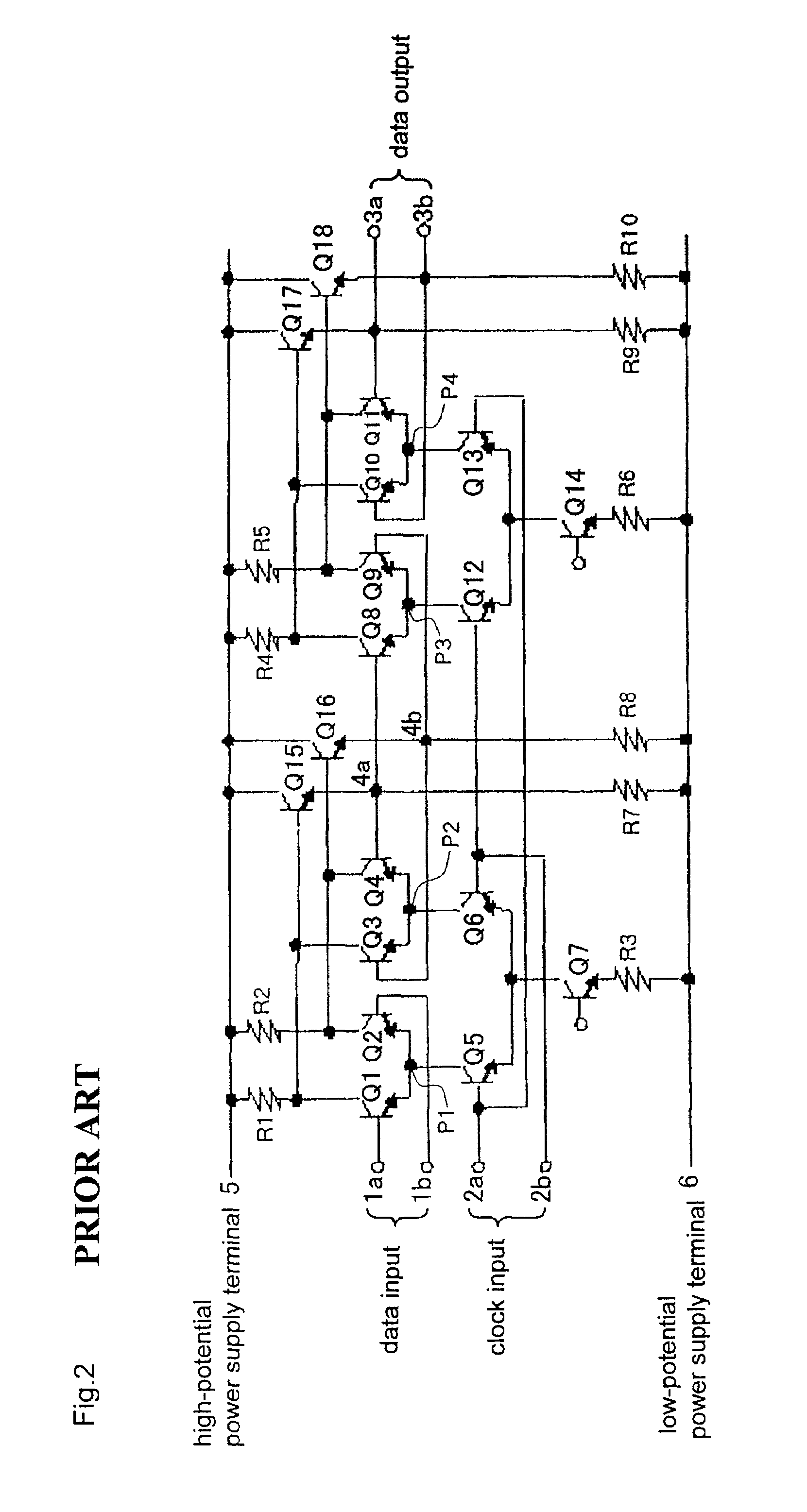Logic circuit for use in a latch circuit and a data reading circuit or the like which includes such a latch circuit
a logic circuit and latch circuit technology, applied in logic circuits, pulse generators, pulse techniques, etc., can solve the problems of output data error, high and low data signal levels are not determined properly, and output waveform suffers synchronization distortion with the clock signal, so as to improve the suppressing error rate and prevent the effect of synchronization distortion
- Summary
- Abstract
- Description
- Claims
- Application Information
AI Technical Summary
Benefits of technology
Problems solved by technology
Method used
Image
Examples
1st embodiment
[0055]An arrangement of a latch circuit according to the present embodiment will be described below. FIG. 5 is a circuit diagram of the latch circuit according to the present embodiment. Those parts of the latch circuit which are identical to those of the latch circuit shown in FIG. 1 are denoted by identical reference characters, and will not be described in detail below.
[0056]As shown in FIG. 5, the latch circuit according to the present embodiment has potential stabilizing circuits 30a, 30b connected respectively to junction S1 between common emitter point P1 of the first differential pair and the third differential pair and junction S2 between common emitter point P2 of the second differential pair and the third differential pair in the arrangement shown in FIG. 1.
[0057]For solving the problems, attention is paid to the potentials at the common emitter points of the differential pairs of the data signal processor as a cause of a clock signal interference. Since each of common em...
2nd embodiment
[0067]A latch circuit according to the present embodiment employs capacitors as potential stabilizing circuits. The latch circuit according to the present embodiment will be described below. FIG. 8 is a diagram showing an arrangement of the latch circuit according to the present embodiment. Those parts of the latch circuit which are identical to those of the latch circuit shown in FIG. 5 are denoted by identical reference characters, and will not be described in detail below.
[0068]In FIG. 8, capacitor C1 is connected between high-potential power supply terminal 5 and junction S1 and capacitor C2 is connected between high-potential power supply terminal 5 and junction S2, as the potential stabilizing circuits shown in FIG. 5.
[0069]A master-slave flip-flop circuit employing the latch circuit shown in FIG. 8 will be described below. FIG. 9 is a diagram showing an example of a flip-flop circuit employing the latch circuit shown in FIG. 8. Those parts of the flip-flop circuit which are i...
3rd embodiment
[0084]A latch circuit according to the present embodiment employs resistance dividing circuits as potential stabilizing circuits. The latch circuit according to the present embodiment will be described below. FIG. 14 is a diagram showing an arrangement of the latch circuit according to the present embodiment. Those parts of the latch circuit which are identical to those of the latch circuit shown in FIG. 5 are denoted by identical reference characters, and will not be described in detail below.
[0085]The latch circuit shown in FIG. 14 has resistance dividing circuits as the potential stabilizing circuits shown in FIG. 5. Junction S1 between common emitter point P1 of the first differential pair and the third differential pair is connected to high-potential power supply terminal 5 through resistor R11 and also to low-potential power supply terminal 6 through resistor R12. Junction S2 between common emitter point P2 of the second differential pair and the third differential pair is con...
PUM
 Login to View More
Login to View More Abstract
Description
Claims
Application Information
 Login to View More
Login to View More - R&D
- Intellectual Property
- Life Sciences
- Materials
- Tech Scout
- Unparalleled Data Quality
- Higher Quality Content
- 60% Fewer Hallucinations
Browse by: Latest US Patents, China's latest patents, Technical Efficacy Thesaurus, Application Domain, Technology Topic, Popular Technical Reports.
© 2025 PatSnap. All rights reserved.Legal|Privacy policy|Modern Slavery Act Transparency Statement|Sitemap|About US| Contact US: help@patsnap.com



